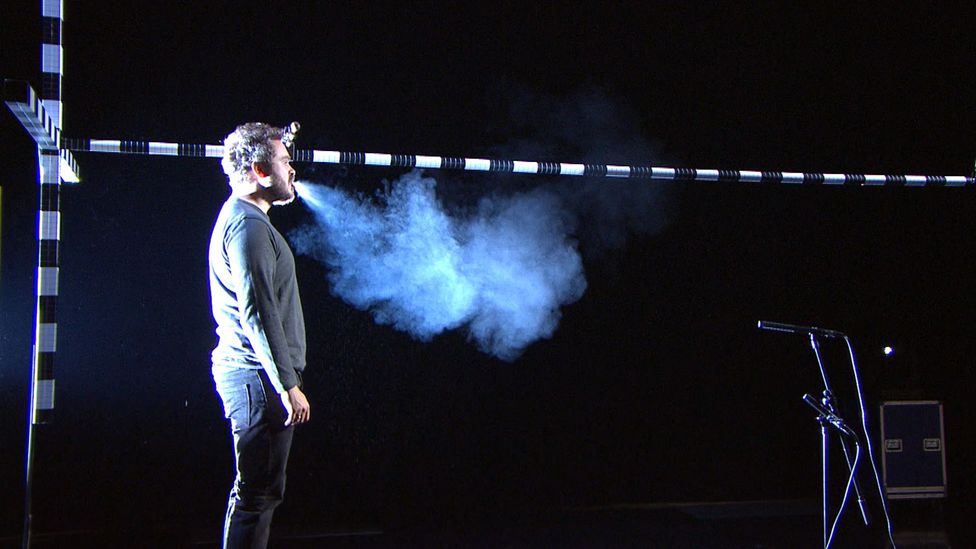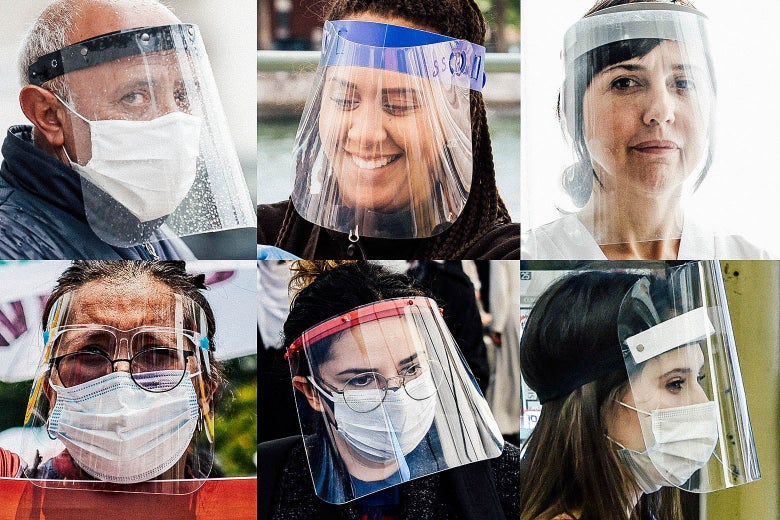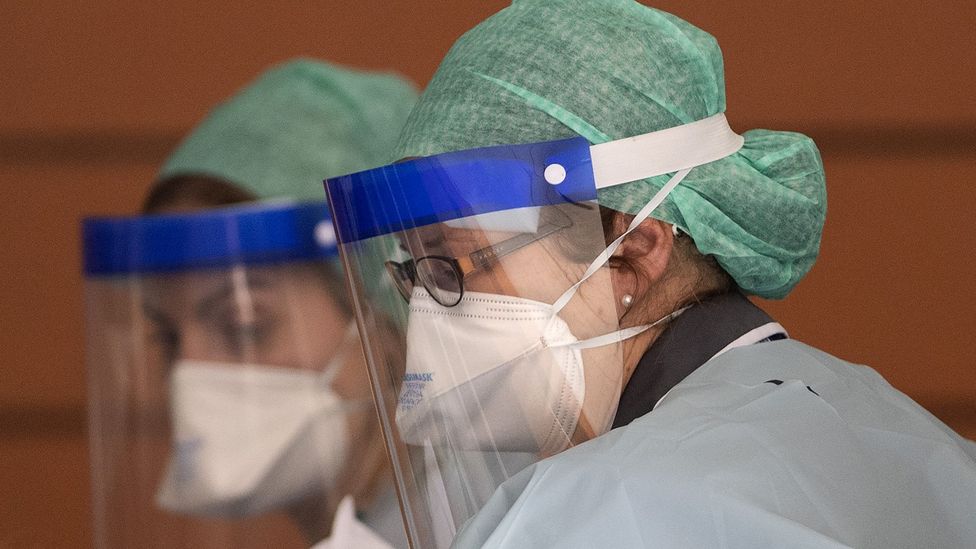
...................................................................................................................................................................
Visualization
shows face shields may not protect against COVID-19 spread
.
 Since the study was a simulation, it
doesn't provide data on the exact conditions that would result in the spread of
an infection.
Since the study was a simulation, it
doesn't provide data on the exact conditions that would result in the spread of
an infection.
.
 Since the study was a simulation, it
doesn't provide data on the exact conditions that would result in the spread of
an infection.
Since the study was a simulation, it
doesn't provide data on the exact conditions that would result in the spread of
an infection.
By Rachael Rettner - Senior
Writer
Small
droplets can easily move around the sides of the visor, the study found.
A new visualization
shows why face shields and masks with exhalation valves may not be the best
barriers for preventing the spread of COVID-19.
Although face shields
initially block droplets from a simulated cough, small droplets can easily move
around the sides of the visor and eventually spread over a large area,
according to the visualization, which is detailed in a study published Tuesday
(Sept. 1) in the journal Physics of Fluids.
 For masks with
exhalation valves, a stream of droplets passes, unfiltered, through the valve,
meaning the mask would in theory do little to hinder the spread of potentially
infectious droplets.
For masks with
exhalation valves, a stream of droplets passes, unfiltered, through the valve,
meaning the mask would in theory do little to hinder the spread of potentially
infectious droplets.
In contrast, the
researchers previously showed that some cotton face masks reduce the spread of
droplets to only a few inches from the face during a simulated cough, Live Science previously reported.
The simulations in
the new study "indicate that face shields and masks with exhale valves may
not be as effective as regular face masks in restricting the spread of
aerosolized droplets," the authors wrote.
Face masks have
become a part of everyday life during the COVID-19 pandemic.
But some people are
turning to plastic face shields or masks with exhalation values because they
find these alternatives more comfortable to wear for long periods of time.
Face shields also
have the advantage of allowing users to show facial expressions.
However, the Centers
for Disease Control and Prevention (CDC) does not recommend either of these as
alternatives to cloth masks.
Masks with one-way
valves, which are intended for use in construction work, allow users to breathe
in filtered air and exhale warm, moist (and unfiltered) air through the
valve, Live Science previously reported.
But because
respiratory droplets from the wearer are expelled into the air, the CDC says
people should not wear these masks to prevent COVID-19 spread.
The CDC also does not
recommend face shields as a substitute for cloth masks because evidence is
lacking to show their effectiveness, the agency says.
"As
students return to schools and universities, some have wondered if it is better
to use face shields, as they are more comfortable and easier to wear for longer
periods of time," study lead author Siddhartha Verma, an assistant professor
at Florida Atlantic University's College of Engineering and Computer
Science, said in a statement.
"But
what if these shields are not as effective? You would be essentially putting
everyone in a tight space with droplets accumulating over time, which could
potentially lead to infections."
In the new study, the
researchers simulated coughing by connecting a mannequin's head to a fog machine
— which creates a vapor from water and glycerin — and using a pump to expel the
vapor through the mannequin's mouth.
They then visualized
the vapor droplets using a "laser sheet" created by passing a green
laser pointer through a cylindrical rod.
In this setup,
simulated cough droplets appear as a glowing green vapor flowing from the
mannequin's mouth.
For the face shield
simulation, the shield initially deflected droplets toward the ground after a
cough.
But small droplets
remained suspended at the bottom of the shield and then floated around the
sides, eventually spreading about 3 feet (0.9 meters) to the front and sides of
the mannequin.
In some cases, the
droplets spread backward, behind the mannequin, instead of forward.
For the mask with a
valve, a jet of droplets passed through the valve in the front of the masks
during coughing.
Initially, this jet
of droplets traveled toward the ground, but eventually the droplets dispersed
over a wide area.
The researchers also
tested two different brands of commercially available surgical masks. Both of
these masks were not recommended for medical use by the manufacturers.
Although the masks
looked similar, one brand was effective at stopping the forward spread of
aerosolized droplets, while the other allowed a high number of droplets to leak
through the mask.
"This
indicates that even among commercially available masks which may appear to be
similar superficially, there can be significant underlying differences in the
quality and type of materials used for manufacturing the masks," the authors said.
Since the study was a
simulation, it doesn't provide data on the exact conditions that would result
in the spread of an infection.
For example, with
SARS-CoV-2, the virus that causes COVID-19, it's unclear exactly how long the
virus remains infectious in the air, and how far infectious particles can
travel, or how much virus is needed to make a person sick.
The
authors also noted that "even the very best masks have some degree of
leakage," Verma said.
So
"it's still important to maintain physical distance while wearing
[masks] to mitigate transmission."
Originally published on Live Science.
Rachael
Rettner
Senior
Writer
Rachael
has been with Live Science since 2010. She has a masters degree in journalism
from New York University's Science, Health and Environmental Reporting Program.
She also holds a Bachelor of Science in molecular biology and a Master of
Science in biology from the University of California, San Diego.


No comments:
Post a Comment